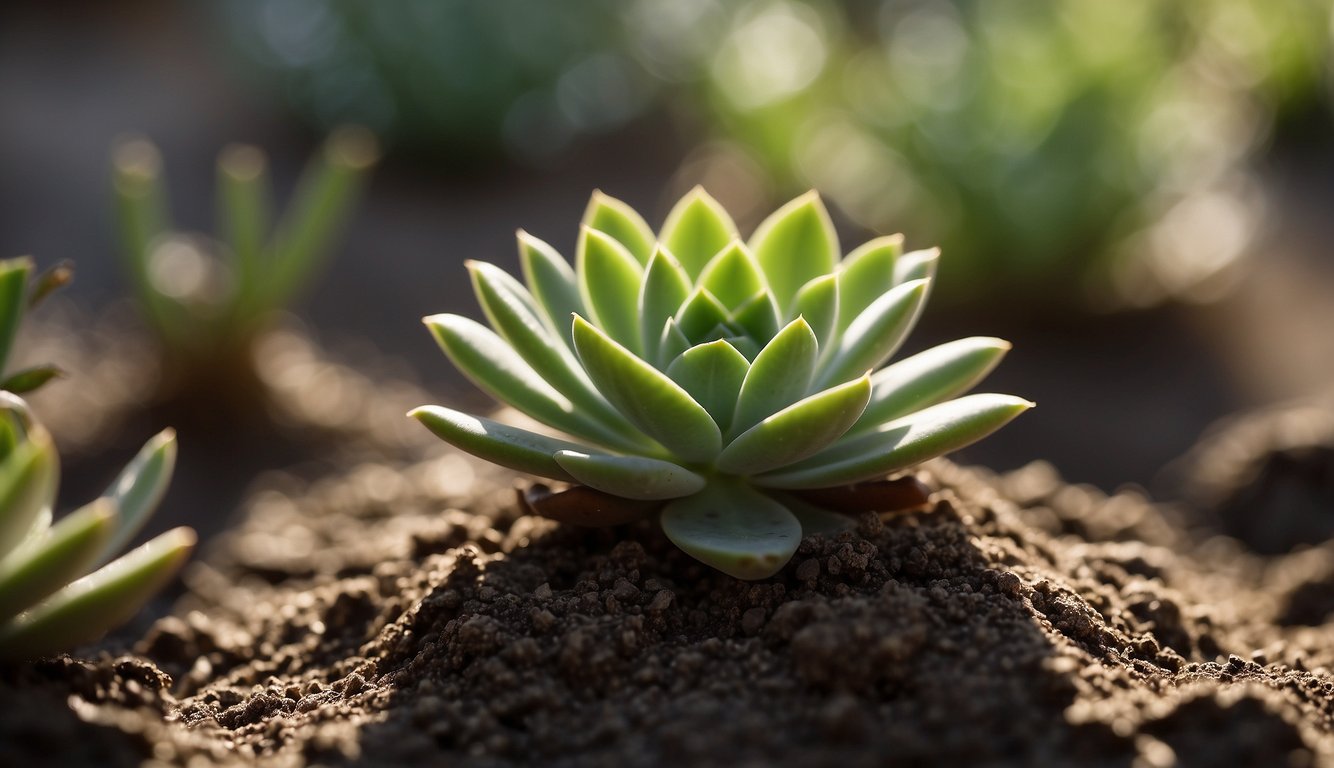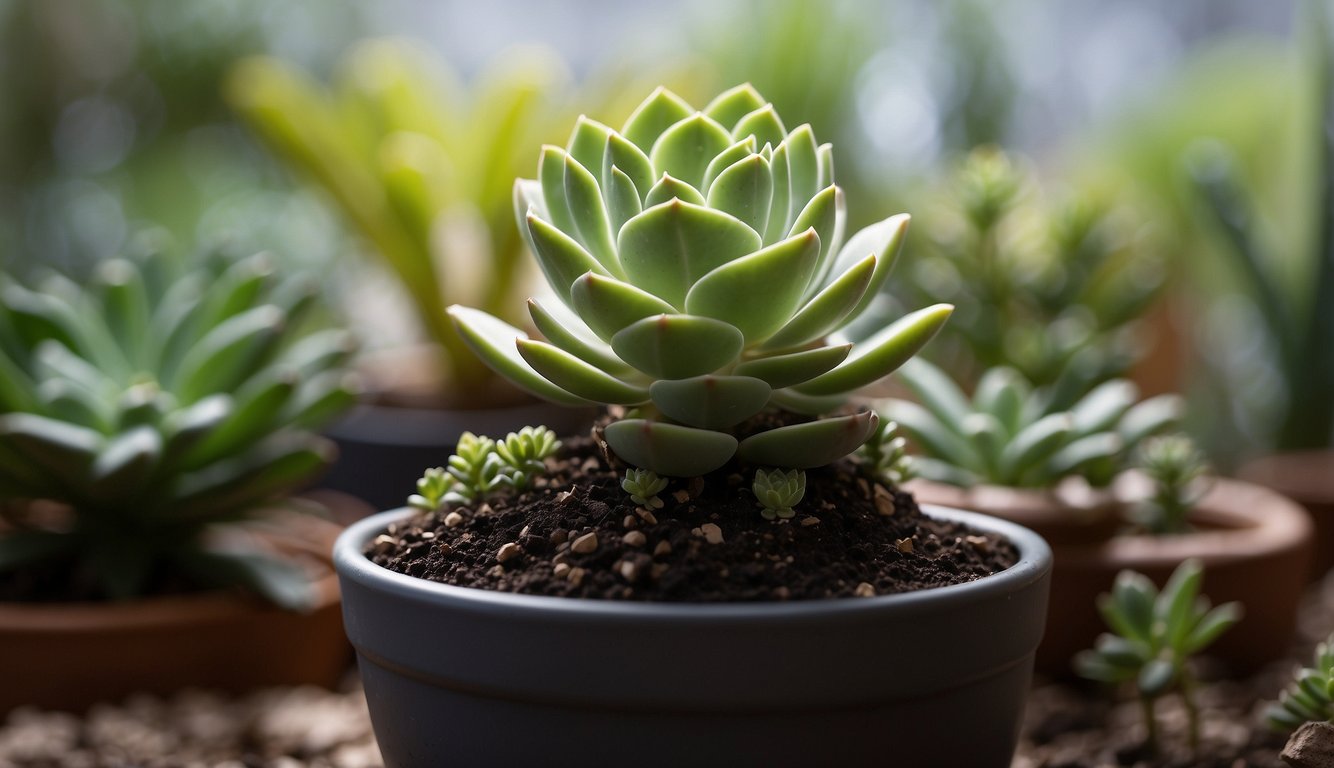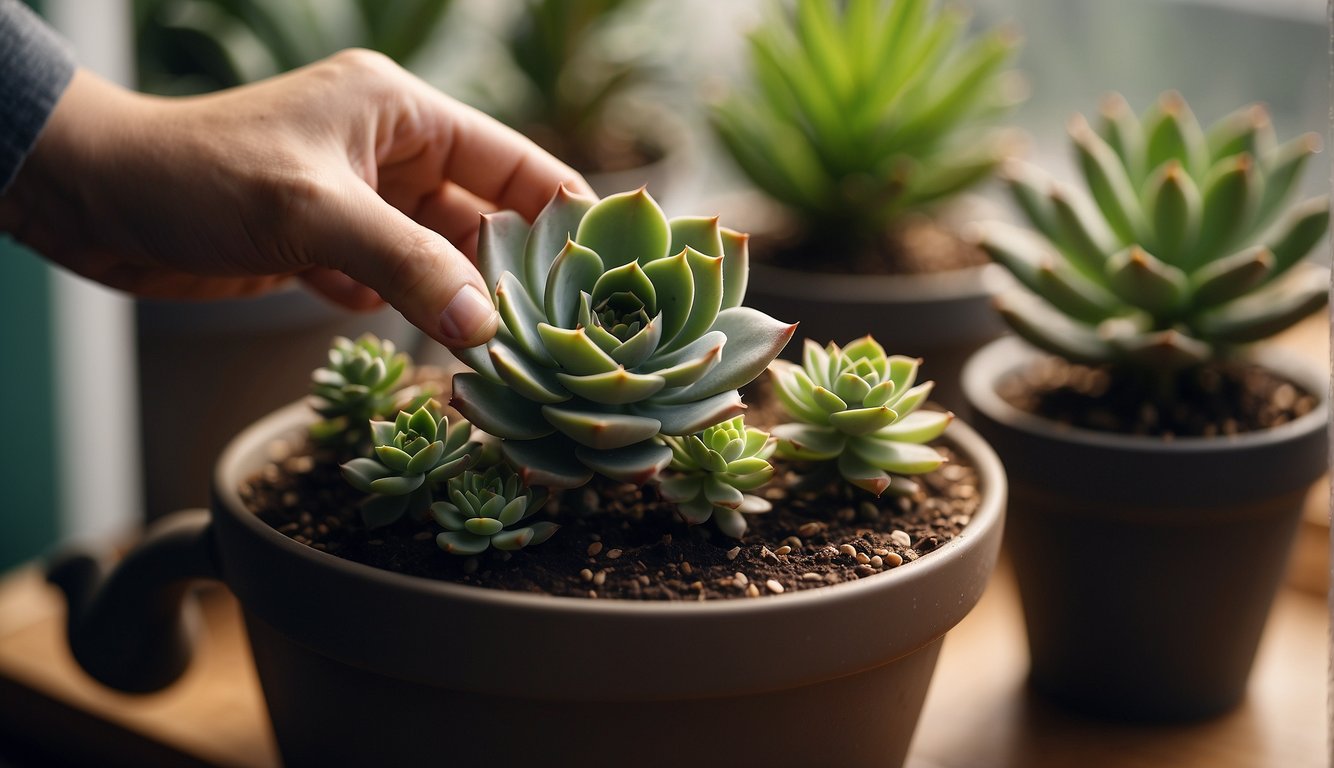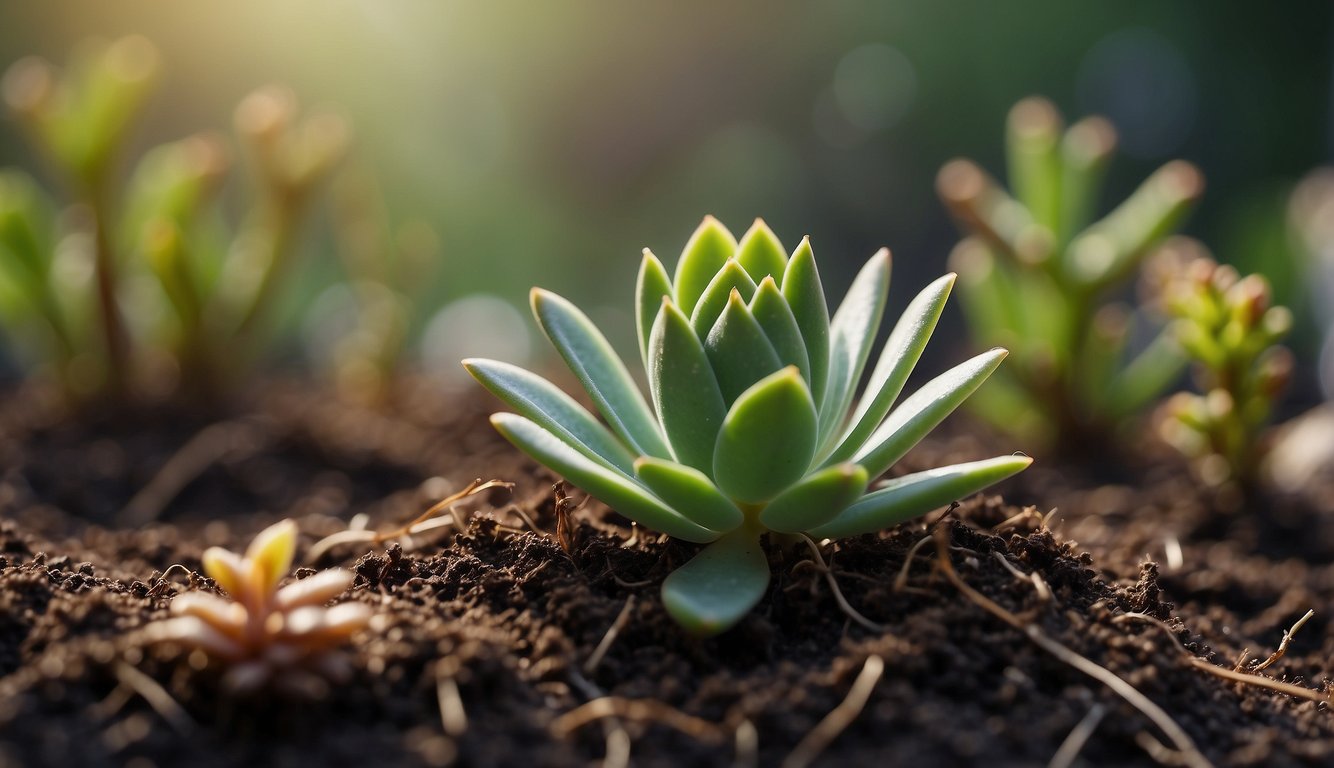TheHerbProf.com is a treasure trove of knowledge for those interested in natural healing and herbal remedies. The website is run by Paul Johnston MD. A naturopathic who has not only received extensive education in the field but also has personal experience in self-healing.
Propagating succulents stem cuttings is an excellent way to expand your plant collection without spending a lot of money. It’s also a great way to share your favorite plants with friends and family. Stem cuttings are one of the easiest ways to propagate succulents, and with a little bit of patience and care, you can have a whole new plant in no time.
To propagate succulents from stem cuttings, you will need a healthy plant with a stem that is at least a few inches long. You’ll also need a clean, sharp pair of scissors or pruning shears and a container filled with well-draining succulent soil. Once you have your materials, you can begin the propagation process.
It’s important to note that not all succulents can be propagated from stem cuttings. However, many popular varieties, such as jade, snake, and Christmas cacti, can be propagated this way. As with any plant propagation method, it’s essential to do your research beforehand to ensure you’re using the correct technique for your specific plant.
The Basics of Propagating Succulents from Stem Cuttings
Propagating succulents from stem cuttings is a simple and effective way to propagate new plants. It is a popular method because it is easy to do and has a high success rate. In this section, I will explain the basics of propagating succulents from stem cuttings.
Selecting the Right Stem
When selecting a stem for propagation, it is important to choose a healthy stem that is free of disease or damage. The stem should be firm, plump, and have a few leaves attached. The stem should also be at least 2 inches long to ensure that there is enough material for rooting.
Preparing the Stem Cutting – Propagating Succulents
Once you have selected the right stem, you need to prepare it for propagation. Using a sharp, clean knife or scissors, cut the stem at a 45-degree angle. This will help to increase the surface area for rooting. Remove any leaves from the bottom 2 inches of the stem.
Rooting the Stem Cutting
After preparing the stem cutting, you need to root it. There are two methods for rooting stem cuttings: water propagation and soil propagation. In water propagation, place the stem cutting in a glass of water and change the water every few days. In soil propagation, place the stem cutting in a well-draining soil mix and water it lightly.
Caring for the New Plant – Propagating Succulents
Once the stem cutting has rooted, it is important to care for the new plant properly. Succulents prefer bright, indirect light and well-draining soil. Water the new plant sparingly, allowing the soil to dry out completely before watering again. Overwatering can lead to root rot and other problems.
Propagating succulents from stem cuttings is a simple and effective way to propagate new plants. By following these basic steps, you can successfully propagate your own succulent plants.
Ideal Succulent Varieties for Stem Propagation

When it comes to propagating succulents from stem cuttings, some varieties are more ideal than others. Here are a few of my favorite succulent varieties that propagate well from stem cuttings:
Jade
Jade (Crassula ovata) is a popular succulent variety that is easy to care for and propagate. It is a great option for beginners who are new to succulent propagation. Jade stems can be cut into sections and planted in well-draining soil. Within a few weeks, new roots will appear, and the stem will start to grow new leaves.
Propagating Succulents – Snake
Snake (Sansevieria) is another succulent variety that is easy to propagate from stem cuttings. Snake plants are known for their long, pointed leaves that grow upright. To propagate a snake plant, simply cut a leaf off and plant it in soil. Within a few weeks, new roots will appear, and the leaf will start to grow a new plant.
Christmas Cacti
Christmas cacti (Schlumbergera) are a popular succulent variety that is known for its colorful flowers. These succulents are easy to propagate from stem cuttings. Simply cut a stem from the main plant and plant it in well-draining soil. Within a few weeks, new roots will appear, and the stem will start to grow new leaves.
Overall, these succulent varieties are great options for stem propagation. They are easy to care for and propagate, making them perfect for beginners or anyone looking to expand their succulent collection.
Steps to Succulent Stem Propagation – Propagating Succulents

Preparing the Cutting
To propagate a succulent stem cutting, I start by selecting a healthy stem from the mother plant. I make sure the stem is at least 2-3 inches long and has several leaves. I use a clean, sharp knife to cut the stem at a 45-degree angle, making sure to avoid crushing or damaging the stem.
After cutting the stem, I let it dry for a few days until the cut end has calloused over. This helps prevent the stem from rotting when planted in soil.
Laying It on the Soil – Propagating Succulents
Once the stem has calloused over, I lay it on top of a well-draining soil mixture. I make sure the cut end of the stem is in contact with the soil. If the stem is too long, I cut it down to size, leaving just enough stem to anchor it in the soil.
I gently press the soil around the base of the stem to hold it in place. I make sure not to bury the stem too deep in the soil, as this can cause it to rot.
Encouraging Root Growth
To encourage root growth, I mist the cutting with water every few days. I avoid overwatering, as this can cause the stem to rot.
I place the cutting in a bright, indirect light location and avoid exposing it to direct sunlight. Also, I make sure the temperature is warm, around 70-75°F, and avoid exposing the cutting to cold drafts.
Within a few weeks, the cutting should start to develop roots and new growth. Once the cutting has established roots, I can transplant it into its own pot or into a larger container with other succulents.
Tips for Successful Succulent Propagation

When it comes to propagating succulents from stem cuttings, there are a few tips that can help ensure success. As someone who has propagated many succulents myself, I’ve learned a thing or two along the way. Here are some tips that I find to be particularly helpful:
1. Choose healthy plants
It’s important to choose healthy parent plants when taking stem cuttings for propagation. Look for plants that are free of pests and diseases, and that have firm, plump leaves. Avoid plants that are wilted or have yellowing leaves, as these may not root successfully.
2. Use well-draining soil – Propagating Succulents
Succulents need well-draining soil to thrive, and this is especially important when propagating them from stem cuttings. Use a soil mix that is specifically formulated for cacti and succulents, or make your own mix using sand, perlite, and peat moss.
3. Allow cuttings to callus over
Before planting your stem cuttings, it’s important to allow them to callus over. This helps to prevent rot and encourages the growth of roots. To do this, simply set your cuttings aside in a dry, shaded area for a few days until the cut end forms a callus.
4. Water sparingly – Propagating Succulents
While it’s important to keep your soil moist when propagating succulent stem cuttings, it’s equally important not to overwater them. Water sparingly, allowing the soil to dry out slightly between waterings. Overwatering can lead to root rot and other problems.
5. Provide bright, indirect light
Succulent stem cuttings need bright, indirect light to root successfully. Avoid placing them in direct sunlight, as this can cause them to dry out too quickly and may lead to sunburn. A bright windowsill or a shaded outdoor area are good options.
By following these tips, you’ll be well on your way to successfully propagating succulent stem cuttings. With a little patience and care, you can grow a whole new collection of beautiful plants.
Before You Go – Propagating Succulents

Propagating succulents from stem cuttings is a simple and rewarding process. With just a few steps, you can increase your collection of succulents for free.
When propagating succulents, it is important to choose a healthy and mature plant to take the cutting from. The cutting should be taken from the stem, ensuring that it includes both the leaf and the stem. This will give the cutting the best chance of developing new roots.
Once you have taken the cutting, it is important to allow it to callus over before planting it. This will prevent the cutting from rotting when it is planted. After the cutting has callused over, it can be planted in well-draining soil.
It is important to remember that not all succulent species are suitable for propagation from stem cuttings. Some species, such as Haworthia and Gasteria, are better propagated from offsets or division. Therefore, it is important to do your research and ensure that the species you are propagating is suitable for stem cutting propagation.
Overall, propagating succulents from stem cuttings is an easy and enjoyable way to expand your collection of succulents. With a little bit of patience and care, you can create a beautiful and diverse collection of these unique and fascinating plants.
Propagating Succulents: A Green Thumb’s Adventure
Today, we’re embarking on a thrilling journey – propagating succulents. Yes, you can turn one succulent into many, and it’s easier than you might think!
First off, let’s talk about why you’d want to propagate succulents. Well, it’s simple – it’s a fantastic way to expand your plant collection! You can take a leaf or a stem cutting, let it dry, then place it on some soil. Before you know it, you’ll see tiny roots and leaves sprouting. It’s like watching a mini miracle!
Now, let’s connect this to theherbprof.com. As your friendly neighborhood Herbalist Blogger, I’m all about helping you nurture your green thumb. And propagating succulents? It’s a perfect example!
By propagating your own succulents, you’re not just growing your indoor garden. You’re also embracing the principles of sustainable gardening, a topic I’m passionate about and often discuss on my blog, theherbprof.com.
So, why not give it a try? Get out there, get your hands dirty, and start propagating your succulents. Your indoor garden (and your sense of accomplishment) will thank you!
References – Propagating Succulents
Little Herb Encyclopedia, by Jack Ritchason; N.D., Woodland Publishing Incorporated, 1995
The Ultimate Healing System, Course Manual, Copyright 1985, Don Lepore
Planetary Herbology, Michael Tierra, C.A., N.D., Lotus Press, 1988
Handbook of Medicinal Herbs, by James A. Duke, Pub. CRP Second Edition 2007
The Complete Medicinal Herbal, by Penelope Ody, Published by Dorling Kindersley
Check the Following Articles!
Grow Peppers Indoors Year Round: Tips and Tricks
Succulent Growing Long Stem: Revive Your Long-Stemmed
How To Start A Thanksgiving Cactus In Water?
Frequently Asked Questions – Propagating Succulents

What is the best soil mix for propagating succulent stem cuttings?
The best soil mix for propagating succulent stem cuttings is one that is well-draining and has good aeration. A popular mix is a combination of cactus or succulent soil and perlite or pumice in a 1:1 ratio. This mix allows for proper drainage and aeration, which is important for rooting succulent cuttings.
How can you increase the success rate of rooting succulent stem cuttings?
To increase the success rate of rooting succulent stem cuttings, it is important to ensure that the cuttings are taken from healthy plants and are allowed to callus over for a few days before planting. Additionally, providing the cuttings with bright but indirect sunlight, keeping the soil moist but not waterlogged, and avoiding over-fertilization can all help increase the success rate of rooting.
Which succulent species are known to be the easiest to propagate from stem cuttings?
Several succulent species are known to be easy to propagate from stem cuttings. Some of the easiest include jade plants (Crassula ovata), snake plants (Sansevieria), and Christmas cacti (Schlumbergera). These plants have a high success rate when it comes to rooting stem cuttings.
What are the steps to propagate succulent leaves in water?
While propagating succulent stem cuttings is more common, propagating succulent leaves in water is also possible. To do this, simply remove a healthy leaf from the mother plant and allow it to callus over for a few days. Then, place the leaf in a container of water, making sure that only the bottom of the leaf is submerged. Change the water every few days and wait for roots to form before planting the leaf in soil.
How long does it typically take for succulent stem cuttings to root and grow?
The time it takes for succulent stem cuttings to root and grow can vary depending on the species of succulent and environmental conditions. However, in general, it can take anywhere from a few weeks to a few months for roots to form and new growth to appear.
Is it possible to propagate a succulent by simply replanting a cut stem, and how?
Yes, it is possible to propagate a succulent by simply replanting a cut stem. To do this, simply cut a stem from a healthy plant and allow it to callus over for a few days. Then, plant the stem in well-draining soil and water it sparingly. With proper care, the stem should root and new growth should appear.


